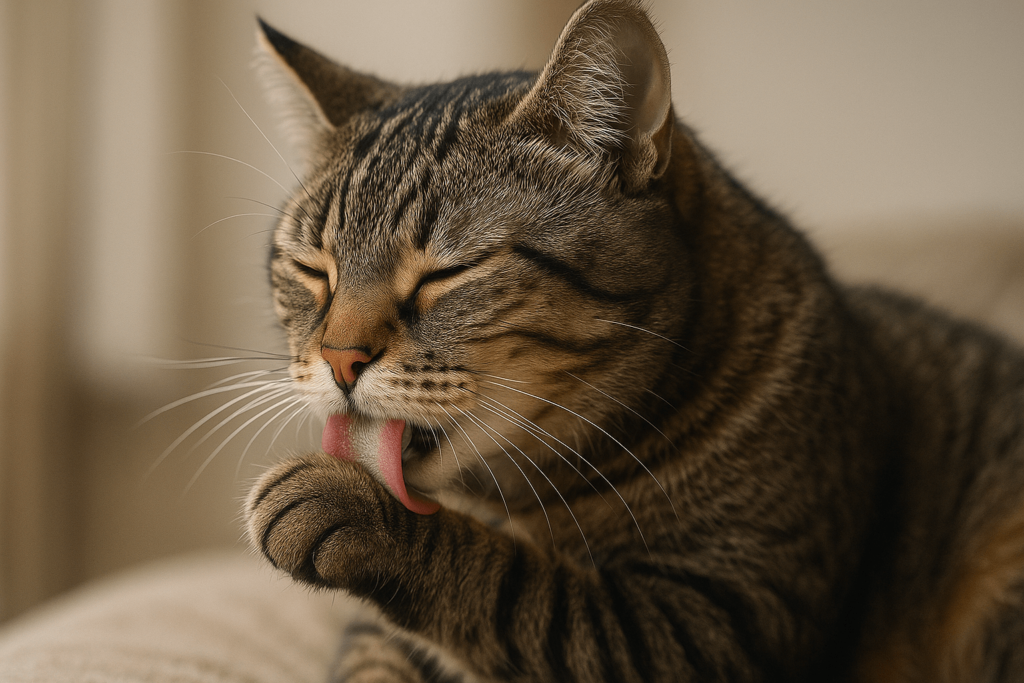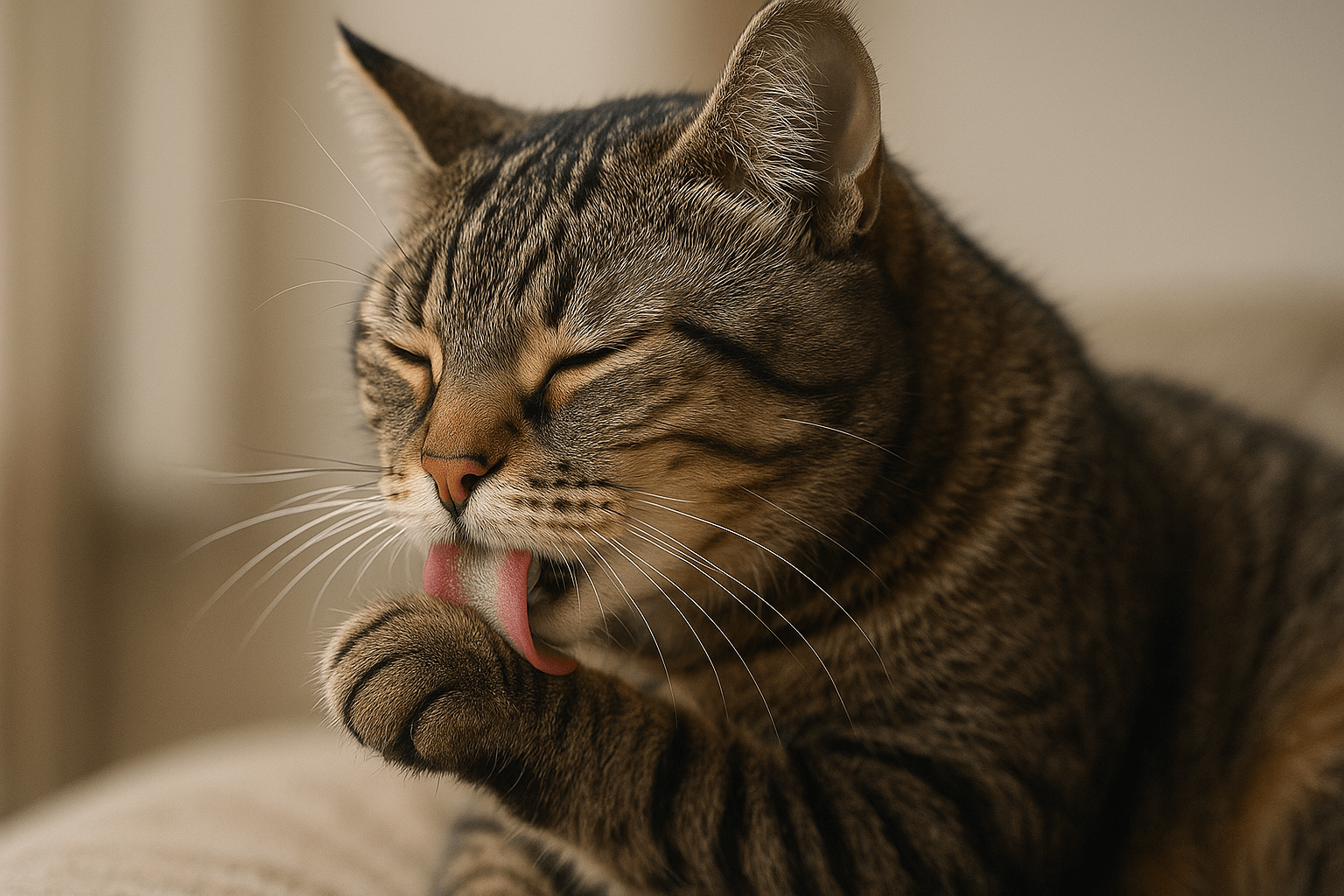Understanding Cat Grooming Behavior
Cats are meticulous groomers, spending a significant portion of their day licking and cleaning themselves. This innate behavior is not only fascinating but also serves several important purposes, from maintaining hygiene to regulating body temperature. For cat owners, understanding the nuances of cat grooming behavior can provide valuable insights into their pet’s health and well-being. Whether it’s watching your feline friend meticulously clean their fur or noticing changes in their grooming habits, this natural instinct plays a crucial role in their daily lives. Let’s dive deeper into the world of cat grooming behavior and explore what makes it so essential for our furry companions.
Why Do Cats Groom Themselves?
Cat grooming behavior is driven by a combination of biological, social, and environmental factors. Understanding these motivations helps us appreciate why grooming is such an integral part of a cat’s routine.
Maintaining Cleanliness:
Cats groom themselves to remove dirt, debris, and loose fur, ensuring their coat remains clean and free of irritants.Temperature Regulation:
Licking their fur helps cats cool down in hot weather by evaporating saliva from their skin, acting as a natural cooling mechanism.Marking Territory:
Cats have scent glands on their face and paws, and grooming spreads their unique scent, marking their territory subtly.Bonding with Other Cats:
Allogrooming, or mutual grooming between cats, strengthens social bonds and reinforces trust within a group.Relieving Stress:
Grooming has a calming effect on cats, helping them cope with anxiety or discomfort in stressful situations.
This multifaceted behavior highlights the importance of grooming in a cat’s physical and emotional well-being.

Signs of Excessive Grooming in Cats
While grooming is a normal and healthy behavior, excessive grooming can indicate underlying issues that require attention. Recognizing the signs early can help prevent complications.
Bald Patches or Hair Loss:
Over-grooming often leads to visible bald spots, which may result from allergies, parasites, or stress.Red or Irritated Skin:
Constant licking can irritate the skin, causing redness, inflammation, or even open sores.Increased Licking of Specific Areas:
Focusing on one area, such as the belly or legs, may signal pain, injury, or an underlying medical condition.Behavioral Changes:
A sudden increase in grooming frequency or intensity could indicate stress, anxiety, or environmental changes.Excessive Hairballs:
Frequent vomiting of hairballs may suggest that your cat is grooming more than usual, leading to ingested fur buildup.
Monitoring these signs allows you to address potential problems promptly and ensure your cat stays healthy and comfortable.
Check this guide 👉How Much Is Cat Grooming? Best 7 Expert Tips!
Check this guide 👉How to Groom a Maine Coon Cat: Best 7 Expert Tips!
Check this guide 👉Why Do Cats Groom Each Other? Best 7 Expert Tips!
Benefits of Normal Grooming Behavior | Risks of Excessive Grooming |
|---|---|
Keeps fur clean and free of tangles | Leads to hair loss and bald patches |
Helps regulate body temperature | Causes skin irritation or infections |
Strengthens social bonds with other cats | May indicate stress or anxiety |
Removes parasites like fleas | Results in frequent hairballs |
Provides comfort and relaxation | Signals potential health issues |
How to Support Healthy Grooming Habits
As a cat owner, there are several ways you can encourage healthy grooming habits and prevent excessive grooming. These proactive steps promote your cat’s overall well-being.
Provide a Balanced Diet:
A nutritious diet supports healthy skin and fur, reducing the likelihood of over-grooming due to itchiness or dryness.Regular Brushing:
Brushing your cat’s fur removes loose hair and prevents matting, reducing the need for excessive self-grooming.Maintain a Stress-Free Environment:
Minimize stressors like loud noises or sudden changes to create a calm and safe space for your cat.Check for Parasites:
Regularly inspect your cat for fleas, ticks, or mites, which can cause itching and lead to excessive grooming.Schedule Routine Vet Visits:
Regular check-ups help identify and address any health issues that might contribute to abnormal grooming behavior.
By taking these measures, you can support your cat’s natural grooming instincts while preventing potential problems.
The Role of Grooming in Social Interactions
Grooming isn’t just a solitary activity for cats—it also plays a vital role in their social interactions with humans and other animals. Understanding this dynamic sheds light on their complex relationships.
Allogrooming Between Cats:
Mutual grooming between cats fosters trust and strengthens bonds within a group or household.Seeking Human Attention:
Some cats groom their owners as a sign of affection, mimicking the behavior they exhibit toward other cats.Establishing Hierarchy:
In multi-cat households, grooming can reinforce social hierarchies, with dominant cats initiating grooming sessions.Comfort Through Touch:
Grooming provides tactile stimulation, offering comfort and reassurance to both the groomer and the recipient.Conflict Resolution:
After minor disputes, cats may groom each other to restore harmony and rebuild trust.
These social dynamics highlight the deeper meaning behind grooming behavior in cats’ interactions with others.
Common Misconceptions About Cat Grooming
There are several myths surrounding cat grooming behavior that can lead to misunderstandings about their needs. Clearing up these misconceptions ensures better care for your pet.
Myth: Cats Don’t Need Help with Grooming:
While cats are excellent groomers, long-haired breeds often benefit from human assistance to prevent mats and tangles.Myth: Excessive Grooming Is Always Behavioral:
Medical conditions like allergies, infections, or hormonal imbalances can also trigger over-grooming.Myth: Cats Only Groom Themselves When Dirty:
Grooming serves multiple purposes, including temperature regulation and stress relief, not just cleanliness.Myth: All Cats Enjoy Being Groomed by Humans:
Some cats tolerate or even enjoy brushing, while others may find it stressful or intrusive.Myth: Hairballs Are Normal and Harmless:
Frequent hairballs can indicate digestive issues or excessive grooming, warranting further investigation.
Dispelling these myths helps foster a deeper understanding of your cat’s grooming habits.
Tools to Enhance Your Cat’s Grooming Routine
Investing in the right tools can make grooming easier and more enjoyable for both you and your cat. Here are some essentials to consider.
Soft-Bristled Brushes:
Ideal for short-haired cats, these brushes gently remove loose fur without irritating the skin.De-Shedding Tools:
Designed for long-haired breeds, these tools minimize shedding and prevent matting.Nail Clippers:
Regular nail trimming complements grooming by keeping claws at a manageable length.Grooming Wipes:
Useful for spot-cleaning areas your cat may miss, especially around the face or paws.Calming Sprays:
Spraying pheromones near grooming tools can reduce stress and make the experience more pleasant for anxious cats.
Equipping yourself with these tools enhances your ability to support your cat’s grooming needs effectively.
Encouraging Positive Grooming Habits in Kittens
Teaching kittens proper grooming habits early sets the foundation for a lifetime of good hygiene and reduced stress. These tips can guide you in fostering healthy behaviors.
Introduce Grooming Gradually:
Start by gently handling their paws and fur during playtime to build trust before introducing tools.Use Positive Reinforcement:
Reward kittens with treats or praise after grooming sessions to create a positive association.Demonstrate Through Play:
Use toys shaped like brushes to mimic grooming motions, helping kittens become familiar with the concept.Set a Routine:
Establish a consistent grooming schedule so kittens grow accustomed to the process over time.Monitor Their Progress:
Observe how kittens interact with grooming tools and adjust your approach based on their comfort level.
By nurturing these habits early, you lay the groundwork for a well-groomed and content adult cat.
Frequently Asked Questions About Cat Grooming Behavior
How much time do cats spend grooming?
Cats typically spend 30-50% of their waking hours grooming themselves or others.
Is excessive grooming always a sign of illness?
Not always—it can also be caused by stress, boredom, or environmental changes. Consulting a vet is recommended.
Can I stop my cat from grooming too much?
Addressing the root cause, whether medical or behavioral, is key to reducing excessive grooming.
Do indoor cats groom differently from outdoor cats?
Indoor cats may groom more frequently due to cleaner environments, while outdoor cats focus on removing dirt and debris.
Should I bathe my cat to reduce grooming?
Most cats don’t need baths, as they are excellent self-groomers. Bathing should only be done if necessary, under veterinary guidance.
Embracing the Importance of Cat Grooming Behavior
Cat grooming behavior is a fascinating blend of instinct, necessity, and social interaction. From keeping their fur pristine to strengthening bonds with companions, grooming plays a vital role in a cat’s life. By understanding the reasons behind this behavior and recognizing signs of excessive grooming, you can ensure your cat remains happy, healthy, and well-adjusted. Whether through regular brushing, providing a stress-free environment, or simply observing their habits, supporting your cat’s grooming needs deepens the bond you share. Celebrate this natural instinct and take pride in nurturing your feline friend’s well-being.
Canned Pumpkin for Cat Diarrhea: Best 7 Expert Tips! Natural remedy to firm stools, soothe upset bellies, and support gut health safely.
Can a Cat Give You Scabies? Best 7 Expert Tips! Discover the truth about feline mites, human skin risks, and how to protect yourself—without panic.
Cat Flea vs Human Flea: Best 7 Expert Tips! Discover the truth about bites, species, and how to eliminate infestations for good.
Weird Cat Behaviors: Best 7 Expert Tips! Discover why cats do strange things—and how to understand, not punish, their instincts for a happier home.





